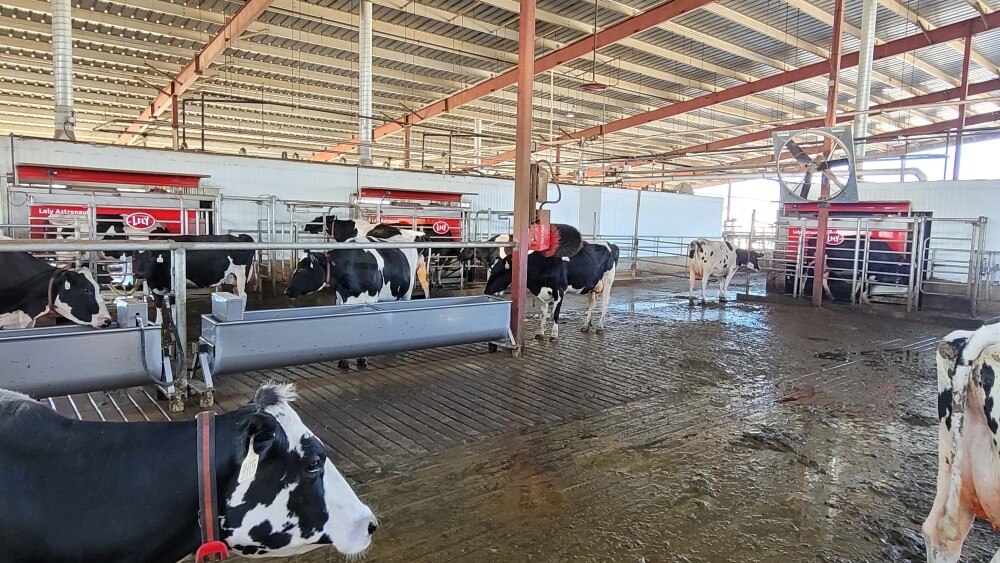A new stopgap spending bill to reopen the government also extends key Farm Bill programs for one year—covering the provisions left out of July’s budget package. While the Senate waits on the House to vote, it brings up what some economists think may be a new reality: the days of passing a comprehensive Farm Bill may be over, and a piecemeal approach could be the new norm in Washington.
It’s been about 6 years and 11 months since Congress passed a new, comprehensive (5-year) farm bill. This week, the continuing resolution (CR), which funds the federal government through January 30, includes an extension of the current farm bill, again. This prevents outdated “permanent law” provisions from taking effect. Without action, those Depression-era statutes could have triggered mandatory price supports for certain commodities, disrupting markets.
The bill also includes an extension of the U.S. Grain Standards Act, ensuring official grain inspection and weighing services continue without interruption.
Senate Votes 60–40 to Advance the Measure
The Senate advanced the package in a 60–40 vote Sunday night, providing farmers relief from uncertainty over whether core safety-net programs might lapse.
An earlier package dubbed the “One Big Beautiful Bill” increased funding for commodity programs, crop insurance, and export promotion, but it left out several smaller and conservation-related initiatives—including the Conservation Reserve Program (CRP). The new CR temporarily fills that gap while Congress works toward a full Farm Bill reauthorization.
Boozman: “Critical USDA Services Resume”
Sen. John Boozman (R-AR), chairman of the Senate Committee on Agriculture, Nutrition, and Forestry, praised the bill’s passage, emphasizing its importance for both producers and rural communities.
“Ending the government shutdown ensures critical USDA services resume so vulnerable families no longer experience disruptions to nutrition benefits, farmers can access the programs and personnel they rely on to keep their operations running efficiently and disaster assistance is delivered,” Boozman said in a statement.“We advanced long-overdue farm bill policy improvements in the One Big Beautiful Bill, including enhanced risk management tools farmers have been calling for, and we’re continuing work to reauthorize other key initiatives. Extending the farm bill and the U.S. Grain Standards Act gives us more time to finalize these programs essential to farmers, ranchers and rural America.”
Is This the New Norm?
The extension buys lawmakers additional time to complete a comprehensive Farm Bill reauthorization, expected to be one of the top legislative priorities in early 2026.
But the loss of urgency to pass a new, comprehensive five-year farm bill may be due to the fact Congress included key enhancements to the Farm Safety Net in the One Big Beautiful Bill earlier this year. The Farm Journal Ag Economists’ Monthly Monitor asked economists in July if that makes it more difficult or easier to pass a Farm Bill this year. 70% said yes. And in September, the Monthly Monitor asked when Congress will pass a new farm bill. Nearly 40% (39%) said a piecemeal approach for passing the farm bill is the new norm.
According to the Congressional Research Service, Sections 10101 and 10108 (Title I, Agriculture) would increase federal outlays by about $52.3 billion + $1.6 billion over 10 years.
The American Farm Bureau Federation says the bill directs about $65.6 billion in new agricultural investment over 10 years: ~$59 billion for core farm safety-net enhancements, ~$6.6 billion for other ag priorities.
Key Farm Bill-style Provisions in the OBBB
Here’s a breakdown of major provisions in the One Big Beautiful Bill Act that impact legislation within the Farm Bill:
1. Extension & enhancement of commodity support / safety-net programs
- The bill extends core programs originally in the Agriculture Improvement Act of 2018 (2018 Farm Bill) through crop year 2031.
- Reference prices under the Price Loss Coverage (PLC) program are raised.
- The Agriculture Risk Coverage (ARC) program’s revenue guarantee is increased (for example, from 86% to 90%) and maximum payment rates increased.
- Marketing Assistance Loan rates are increased.
- The bill provides a one-time opportunity for eligible producers to update base acres (“new base acre holdings”).
2. Crop insurance and disaster assistance
- Premium subsidies for crop insurance increase; the bill boosts coverage levels for the Supplemental Coverage Option (SCO) and Whole Farm Revenue Protection (WFRP) policies.
- Disaster assistance programs are expanded: loss types eligible are broadened, thresholds for payment triggers are lowered, and coverage levels increased.
3. Dairy, sugar, and specialty commodities
- For dairy: The bill increases the amount of milk production a producer can enroll in the Dairy Margin Coverage (DMC) program. Also, it requires dairy product manufacturers to report cost/yield data so that “make allowances” under the federal milk marketing order system can be updated.
- For sugar: Under the sugar support program, priority is given to sugar-beet processors if marketing allotments are raised; the bill also mandates reallocation of tariff-rate quota shortfalls by March 1 and requires USDA to report on refined sugar imports.
4. Agricultural research, animals, trust funds, and miscellaneous programs
- Section 10108 of the bill funds: the National Animal Health Laboratory Network, National Animal Disease Preparedness Response Program, and the National Animal Vaccine and Veterinary Countermeasures Bank.
- Extends funding for trust funds supporting pima cotton, wool, certain textile, and citrus industries.
- Miscellaneous investments in horticulture, energy (for agriculture), trade promotion, and rural infrastructure also included.
While nothing is easy in Washington, it seems addressing portions of farm bill funding within other legislation is the path of least resistance. Which could change the way farm bills are shaped - and passed through Congress- in the years ahead.
Opposition to the Farm Bill Extension
While most farm groups applaud the one-year extension of the 2018 Farm Bill, the Institute for Agriculture and Trade Policy (IATP) says it comes with potential issues for small and medium size farmers.
“The Senate’s deal to reopen the government has a number of problems that will hurt farmers and rural communities. The Senate attaches a 12-month Farm Bill extension to the deal, setting up the possibility for more chaos just a year from now,” says Michael Happ, Program Associate for Climate and Rural Communities. “Even worse, it is not a clean extension. The text proposes eliminating payment limitations for Farm Bill conservation programs such as the Environmental Quality Incentives Program (EQIP). In most years, well over half of applicants to EQIP are turned away due to a lack of funds — and without payment limits, the USDA will likely issue fewer, larger EQIP contracts. By getting rid of the payment limit, the Senate opens the door for more of EQIP’s finite resources to be diverted to the largest operations while more small and midscale farms are closed out.”
IATP is urging the Senate needs to keep payment limits in place and go back to the negotiating table.













